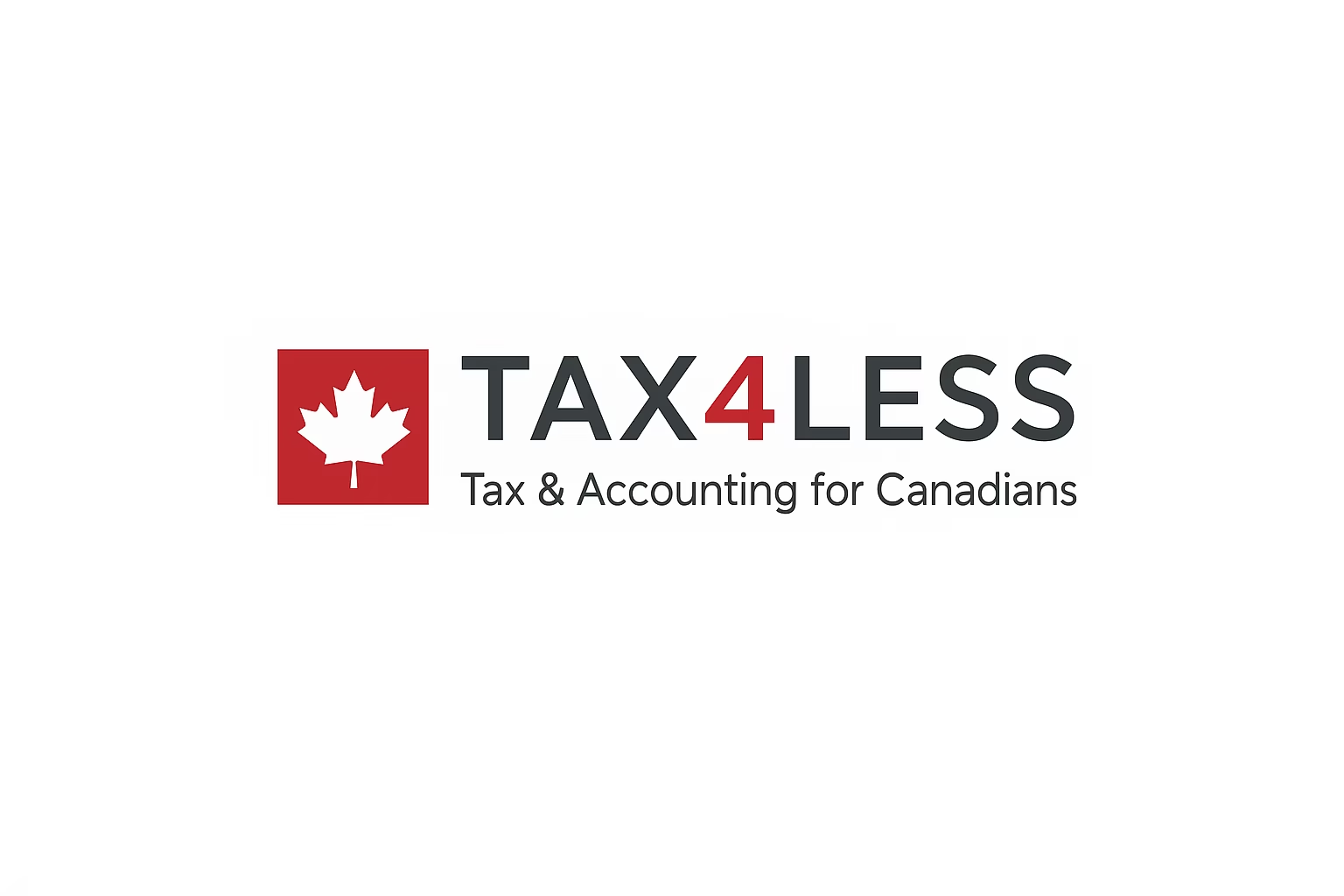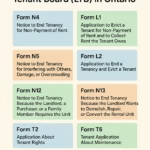Form L1 – Application to Evict a Tenant for Non-Payment of Rent and to Collect Rent Owed (Ontario LTB Guide)
When a tenant fails to pay rent on time, landlords in Ontario can use Form L1 to apply to the Landlord and Tenant Board (LTB) to evict the tenant and recover unpaid rent. This process is one of the most commonly used applications under the Residential Tenancies Act (RTA) and is governed by strict timelines and procedural requirements.
Below is a complete, step-by-step explanation of how Form L1 works, what each party should expect, and the potential consequences.
Step 1: Serve Form N4 – Notice to End Tenancy for Non-Payment of Rent
Before a landlord can file Form L1, they must first serve the tenant with Form N4.
This form gives the tenant 14 days (or 7 days for daily or weekly tenancies) to pay the overdue rent or move out.
If the tenant pays all the rent within the notice period, the N4 becomes void — the tenancy continues as normal, and the landlord cannot file Form L1.
If the tenant does not pay within the notice period, the landlord becomes eligible to file Form L1 with the LTB the day after the notice period ends.
Tip: Always calculate the 14-day period correctly and keep proof of service (e.g., certificate of service) since even small date errors can invalidate the entire application.
Step 2: Filing Form L1 with the LTB
Once the notice period from the N4 has expired, the landlord can file Form L1.
This form can be filed:
Online: Through the LTB’s e-Filing system (preferred and fastest option).
By mail or in person: At an LTB office or ServiceOntario location.
Filing Fee
$201 (as of 2025) when filed online
$216 when filed by mail or in person
You must attach:
A copy of the N4 Notice and proof of service
The rent ledger showing the amounts owed
A completed L1 Application form
Step 3: Waiting for a Hearing or Order
After filing, the LTB will schedule a hearing or issue a Notice of Hearing and copy of the application to both parties.
In most cases, the tenant has an opportunity to dispute the claim or attend the hearing.
Typical Timeline
Hearing date: Usually scheduled 3–6 weeks after filing (though delays are common due to LTB backlog).
Decision/Order: Typically released 1–3 weeks after the hearing.
Overall, landlords should expect the entire process to take 4–10 weeks, depending on case complexity and region.
Step 4: What Happens at the Hearing
The hearing can be in-person, online, or by phone.
The landlord must show proof that the N4 was served properly and that rent is still unpaid.
The tenant can present evidence, such as receipts, maintenance complaints, or payment arrangements.
Possible Outcomes
Eviction Order Granted:
The LTB orders the tenant to move out by a certain date (usually within 11 days).Payment Agreement:
The Board may allow the tenant to stay if they agree to pay arrears and ongoing rent by set deadlines.Application Dismissed:
If the landlord made an error (wrong date, incorrect notice, miscalculated amount), the case can be dismissed.
Step 5: Enforcement of Eviction
If the tenant fails to move out after the LTB issues an eviction order, the landlord cannot evict directly.
The landlord must take the LTB order to the Sheriff’s Office (Court Enforcement Office) to have it enforced.
Important:
Only the Sheriff can legally remove a tenant. If a landlord attempts to change locks or remove belongings without the Sheriff, it is considered illegal eviction.
Step 6: How a Tenant Can Void or Stop the Process
A tenant can make an L1 application “null and void” by:
Paying all rent owing before the hearing date (including rent that became due after the N4 notice).
Reaching a settlement agreement with the landlord before the order is issued.
Demonstrating that the N4 or L1 was improperly served or filed.
If payment is made after the order is issued but before the Sheriff acts, the landlord may agree to withdraw enforcement, but this is not guaranteed.
Step 7: Money Owed and Collection
The L1 form allows the landlord not only to evict but also to claim:
Rent arrears up to the hearing date
Additional rent that became due after filing but before the hearing
NSF cheque fees or other rent-related charges (with proof)
If the tenant vacates and still owes money, the landlord can file Form L9 or L10 to collect the remaining balance.
Rights of Landlords and Tenants
Landlord Rights:
To receive rent on the due date stated in the lease.
To seek eviction through legal LTB channels if rent is unpaid.
To recover owed rent through an LTB order or civil court.
Tenant Rights:
To receive proper notice (Form N4) before any eviction process begins.
To pay and void the notice within the time allowed.
To attend the hearing and present evidence.
To request a review or appeal within 30 days if the order was made unfairly or in error.
Impact on Tenant’s Record and Future Rentals
If an eviction order is granted, it can have long-term consequences for the tenant:
The eviction and rent arrears may appear on their credit report if the landlord sends the debt to collections or files with small claims court.
The LTB’s public record (CanLII) may show the tenant’s name and eviction details.
Future landlords often check tenant databases like Tenant Verification Service (TVS) or Landlord Credit Bureau, which can make renting harder.
Paying off arrears or settling the case before an order is issued can help minimize long-term damage.
How Long the Entire Process Takes
| Stage | Approximate Duration |
|---|---|
| Serve N4 Notice | 14 days (tenant response period) |
| File Form L1 | 1–2 days processing |
| Wait for Hearing | 3–6 weeks (varies by region) |
| LTB Decision Issued | 1–3 weeks after hearing |
| Sheriff Enforcement | 1–3 weeks (if eviction ordered) |
| Total Estimated Time | 6–12 weeks overall |
Costs Involved
| Type of Expense | **Amount (Approx.) | Notes |
|---|---|---|
| L1 Filing Fee | $201 online / $216 in person | Non-refundable |
| Sheriff Enforcement | $300–$400 | Paid to local Sheriff’s Office |
| NSF/Service Fees | Case-specific | Must be proven at hearing |
Final Notes and Best Practices
Accuracy matters: Even minor errors on Form N4 or L1 can lead to dismissal.
Communication first: Many disputes resolve faster when landlords and tenants negotiate a repayment plan.
Keep records: Always maintain rent ledgers, written notices, and proof of service.
Consult professionals: Property managers or paralegals familiar with LTB procedures can help prevent costly delays.
Conclusion
Form L1 is a powerful but tightly regulated process. It protects landlords’ rights to receive rent while giving tenants an opportunity to catch up before losing their home. Understanding each step — from serving the initial N4 notice to enforcing an eviction order — ensures both parties handle the process fairly, efficiently, and within Ontario’s legal framework.
A clear understanding of this process can prevent unnecessary conflict and help landlords and tenants maintain professionalism and compliance throughout any rent-related dispute.
- accounting services Canada
- eviction costs
- eviction notice
- eviction timeline
- Form L1
- Form N4
- how to evict a tenant
- Landlord and Tenant Board
- landlord rights
- LTB application steps
- LTB filing procedure
- LTB hearing
- LTB Ontario
- non-payment of rent
- Ontario eviction process
- Ontario housing law
- Ontario landlord guide
- Ontario rental process
- Ontario rental tribunal
- payroll management
- personal tax returns
- rent arrears
- rent recovery
- rental disputes
- rental laws Ontario
- residential tenancies act
- sheriff eviction Ontario
- tax compliance Canada
- tax planning Canada
- Tax4less
- tax4less.ca
- Tax4Less.ca Inc
- tenant credit impact
- tenant eviction
- tenant eviction rights
- tenant rights
- unpaid rent collection

 Previous Post
Previous Post